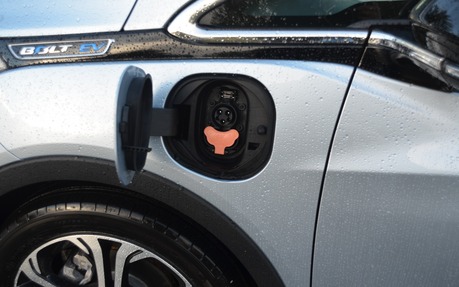GM to Double Resources for Electric and Autonomous Cars by 2021
A few days ago, General Motors released its 2018 annual sustainability report. In addition to highlighting some of the automaker’s best moves from the past year, the document, titled “Transformation in Progress,” presents the overall strategy going forward.
Most notably, over the next two years GM will double its resources allocated to electric and autonomous vehicle programs while prioritizing future investments in next-generation battery-electric vehicles.
- Also: It’s Official: GM Will Have its Electric Pickup, Too
- Also: Cadillac’s Super Cruise Tech Expands in Canada
Remember, the plan we’ve been shown so far calls for 20 new electric cars to be launched globally by 2023. Two of them hit the market in China last year (Buick Velite 6 EV and Baojun E200), but it’s still unclear how many will come to North America.
What we do know is that Cadillac will be GM’s lead EV brand when the next-generation, battery-electric vehicle architecture debuts. A crossover based on the Chevrolet Bolt EV is expected to be released in 2020 and a fully electric pickup will follow a couple of years later.

“For years, we have said that the auto industry is experiencing more change today than in the past 50 years. That pace of change is only accelerating,” said Mary Barra, General Motors chairman and CEO. “With the right team, technology, resources and scale to achieve our vision, I believe the only thing that can stop us is not acting quickly enough. Disruption creates uncertainty, but it also creates vast possibilities that will lead to a better world.”
GM is even proposing a National Zero Emission Vehicle program (in the U.S.) where manufacturers would need to meet steadily increasing targets for electrifying a portion of their light-duty vehicle fleets. The program could put more than seven million long-range EVs on the road while reducing CO2 emissions by 375 million tons over current levels between 2021 and 2030.
When it comes to deploying self-driving vehicles, GM has fallen behind schedule. While it recently expanded the functionality of Cadillac’s Super Cruise hands-free driver assistance system, the automaker is still nowhere near ready to launch its first fully autonomous vehicle.
In order to accelerate development, 1,000 employees will be added to GM’s Cruise subsidiary this year—nearly doubling its workforce. Furthermore, GM is working with Cruise and Honda to develop a new, purpose-built autonomous vehicle for global deployment that can serve a wide variety of use cases.
